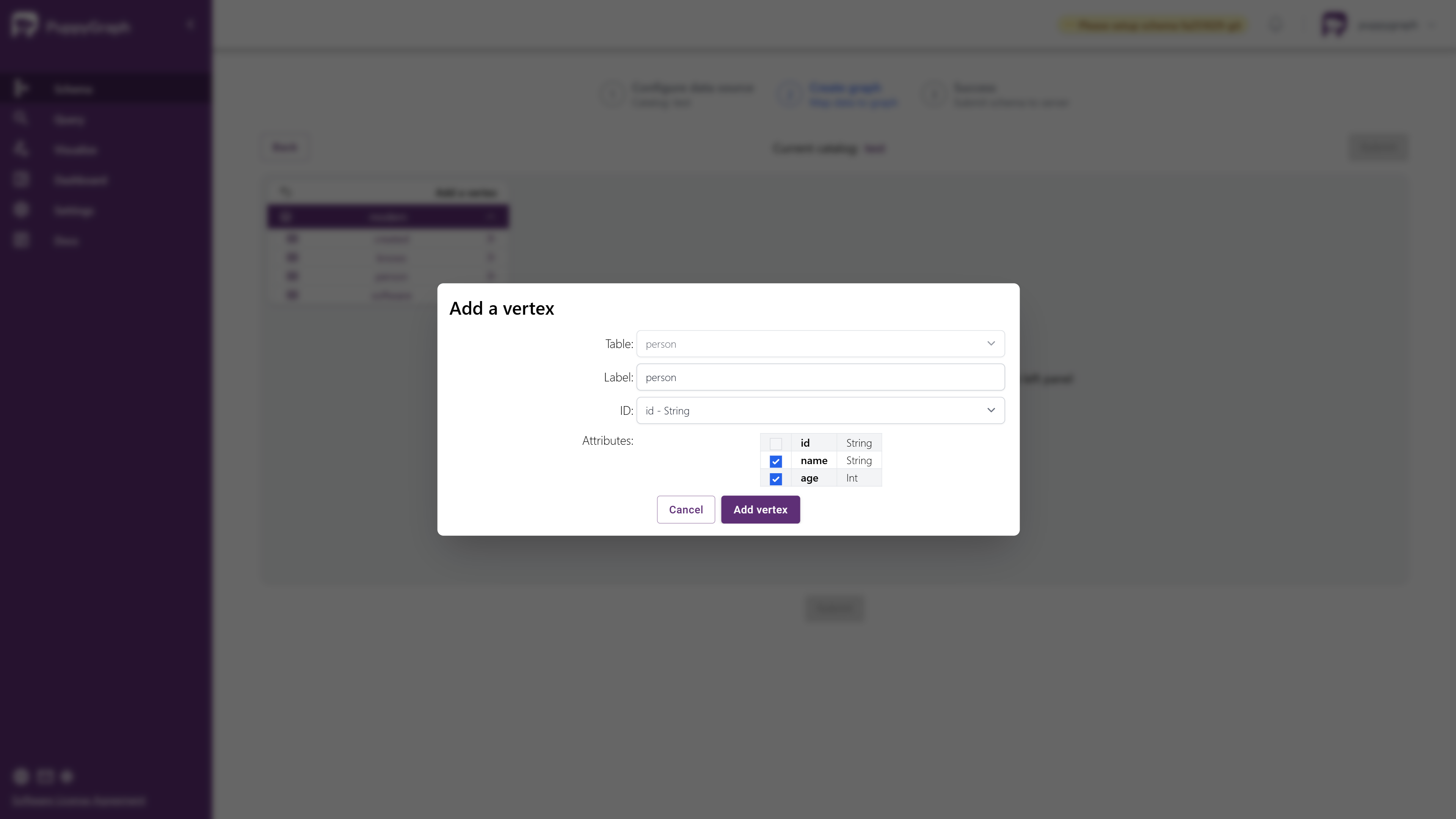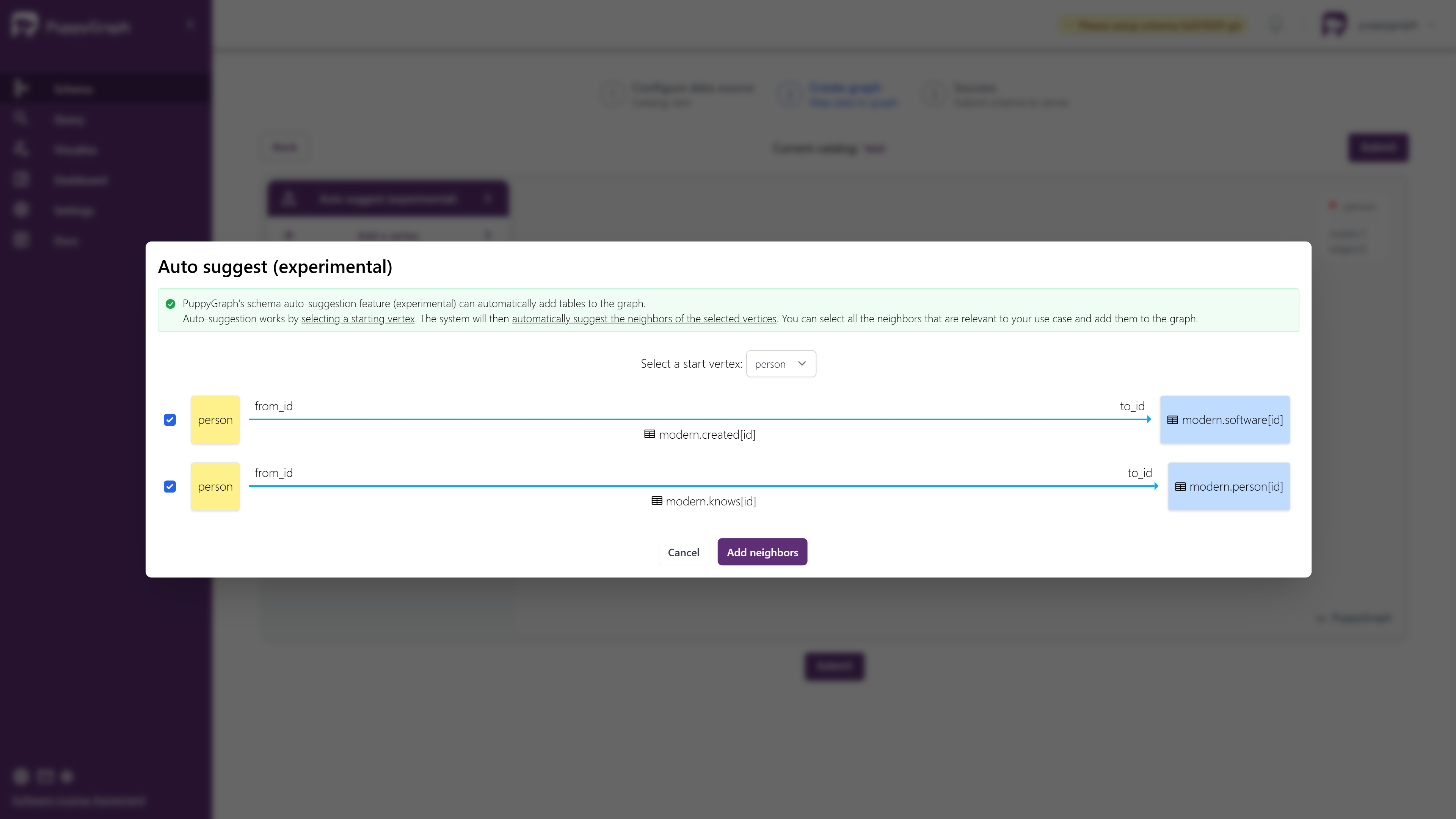Querying Polaris Data as a Graph
Summary
In this tutorial, you will:
- Start an Apache Polaris server;
- Create Apache Iceberg tables locally under the catalog and load it with example data;
- Start a PuppyGraph Docker container and query the data as a graph.
Prerequisites
Docker
Docker is required to run the PuppyGraph server. You can download Docker from here.
Please ensure that docker compose is available. The installation can be verified by running:
JDK 21
JDK 21 is required to build the Polaris.
For Ubuntu, you can install it using the following commands:
Polaris Preparation
Starting Server

 Start the Polaris server.
Start the Polaris server.
The Polaris server will start. We specified the bootstrap credentials POLARIS,root,s3cr3t in the command.
POLARISis the realmrootis the CLIENT_IDs3cr3tis the CLIENT_SECRET

root:s3cr3t (CLIENT_ID:CLIENT_SECRET format).
Data Preparation

polaris directory:
 Then use the provided spark shell to create data catalog and prepare data.
Then use the provided spark shell to create data catalog and prepare data.
CREATE DATABASE IF NOT EXISTS modern;
CREATE TABLE modern.person (id string, name string, age int) USING iceberg;
INSERT INTO modern.person VALUES
('v1', 'marko', 29),
('v2', 'vadas', 27),
('v4', 'josh', 32),
('v6', 'peter', 35);
CREATE TABLE modern.software (id string, name string, lang string) USING iceberg;
INSERT INTO modern.software VALUES
('v3', 'lop', 'java'),
('v5', 'ripple', 'java');
CREATE TABLE modern.created (id string, from_id string, to_id string, weight double) USING iceberg;
INSERT INTO modern.created VALUES
('e9', 'v1', 'v3', 0.4),
('e10', 'v4', 'v5', 1.0),
('e11', 'v4', 'v3', 0.4),
('e12', 'v6', 'v3', 0.2);
CREATE TABLE modern.knows (id string, from_id string, to_id string, weight double) USING iceberg;
INSERT INTO modern.knows VALUES
('e7', 'v1', 'v2', 0.5),
('e8', 'v1', 'v4', 1.0);
Starting PuppyGraph

8182 to 8183 as Polaris also uses 8182.
docker run -p 8081:8081 -p 8183:8182 -p 7687:7687 -e PUPPYGRAPH_PASSWORD=puppygraph123 -v /tmp/polaris:/tmp/polaris --name puppy --rm -itd puppygraph/puppygraph:stable
Modeling the Graph
Connecting to Polaris

puppygraph as the username and puppygraph123 as the password.

Create graph schema to create a new graph schema.
Fill in the fields as follows.

| Parameter | Value |
|---|---|
| Catalog type | Apache Iceberg |
| Catalog name | Some name for the catalog as you like. |
| Metastore Type | Iceberg REST |
| RestUri | http://host.docker.internal:8181/api/catalog. On Linux, the IP for the host might be 172.17.0.1 if you do not add --add-host=host.docker.internal:host-gateway to the Docker run command. |
| Warehouse | manual_spark. This was created by the run_spark_sql.sh script. |
| Credential | root:s3cr3t (CLIENT_ID:CLIENT_SECRET format from the Polaris server output) |
| Scope | PRINCIPAL_ROLE:ALL |
| Storage type | Get from metastore |

Submit to connect to the Polaris server.
Building the Graph Schema

Schema Builder, select the modern database and add the first node type to the graph from the table person.


person as the start node (vertex) and add the auto suggested nodes and edges.

The graph schema should look like this:


Querying the Graph
PuppyGraph provides a Dashboard that gives the summary of the graph.

One can also use the Interactive Query UI to further explore the graph by sending queries.

Cleaning up

